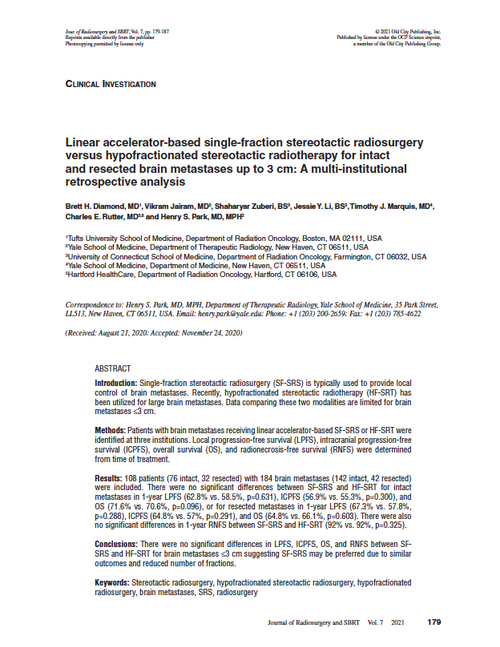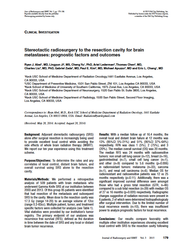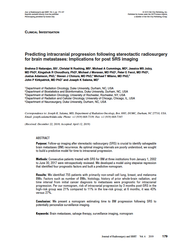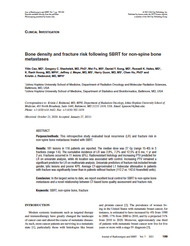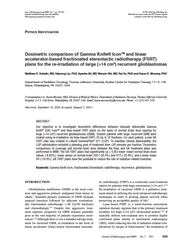- Home
- Journal Contents Downloads
- JRSBRT Downloads
- JRSBRT 7.3, p. 179-187
Product Description
After payment has been processed for your order of a digital copy (PDF) of this article, you will see a download link on your completed order page and also receive an email containing a download link. The links, which will enable you to download one copy of the article, will expire after 24 hours.
Linear accelerator-based single-fraction stereotactic radiosurgery versus hypofractionated stereotactic radiotherapy for intact and resected brain metastases up to 3 cm: A multi-institutional retrospective analysis
Brett H. Diamond, Vikram Jairam, Shaharyar Zuberi, Jessie Y. Li, Timothy J. Marquis, Charles E. Rutter and Henry S. Park
Introduction: Single-fraction stereotactic radiosurgery (SF-SRS) is typically used to provide local control of brain metastases. Recently, hypofractionated stereotactic radiotherapy (HF-SRT) has been utilized for large brain metastases. Data comparing these two modalities are limited for brain metastases ≤3 cm.
Methods: Patients with brain metastases receiving linear accelerator-based SF-SRS or HF-SRT were identified at three institutions. Local progression-free survival (LPFS), intracranial progression-free survival (ICPFS), overall survival (OS), and radionecrosis-free survival (RNFS) were determined from time of treatment.
Results: 108 patients (76 intact, 32 resected) with 184 brain metastases (142 intact, 42 resected) were included. There were no significant differences between SF-SRS and HF-SRT for intact metastases in 1-year LPFS (62.8% vs. 58.5%, p=0.631), ICPFS (56.9% vs. 55.3%, p=0.300), and OS (71.6% vs. 70.6%, p=0.096), or for resected metastases in 1-year LPFS (67.3% vs. 57.8%, p=0.288), ICPFS (64.8% vs. 57%, p=0.291), and OS (64.8% vs. 66.1%, p=0.603). There were also no significant differences in 1-year RNFS between SF-SRS and HF-SRT (92% vs. 92%, p=0.325).
Conclusions: There were no significant differences in LPFS, ICPFS, OS, and RNFS between SF-SRS and HF-SRT for brain metastases ≤3 cm suggesting SF-SRS may be preferred due to similar outcomes and reduced number of fractions.
Keywords: Stereotactic radiosurgery, hypofractionated stereotactic radiosurgery, hypofractionated radiosurgery, brain metastases, SRS, radiosurgery
 Loading... Please wait...
Loading... Please wait...

